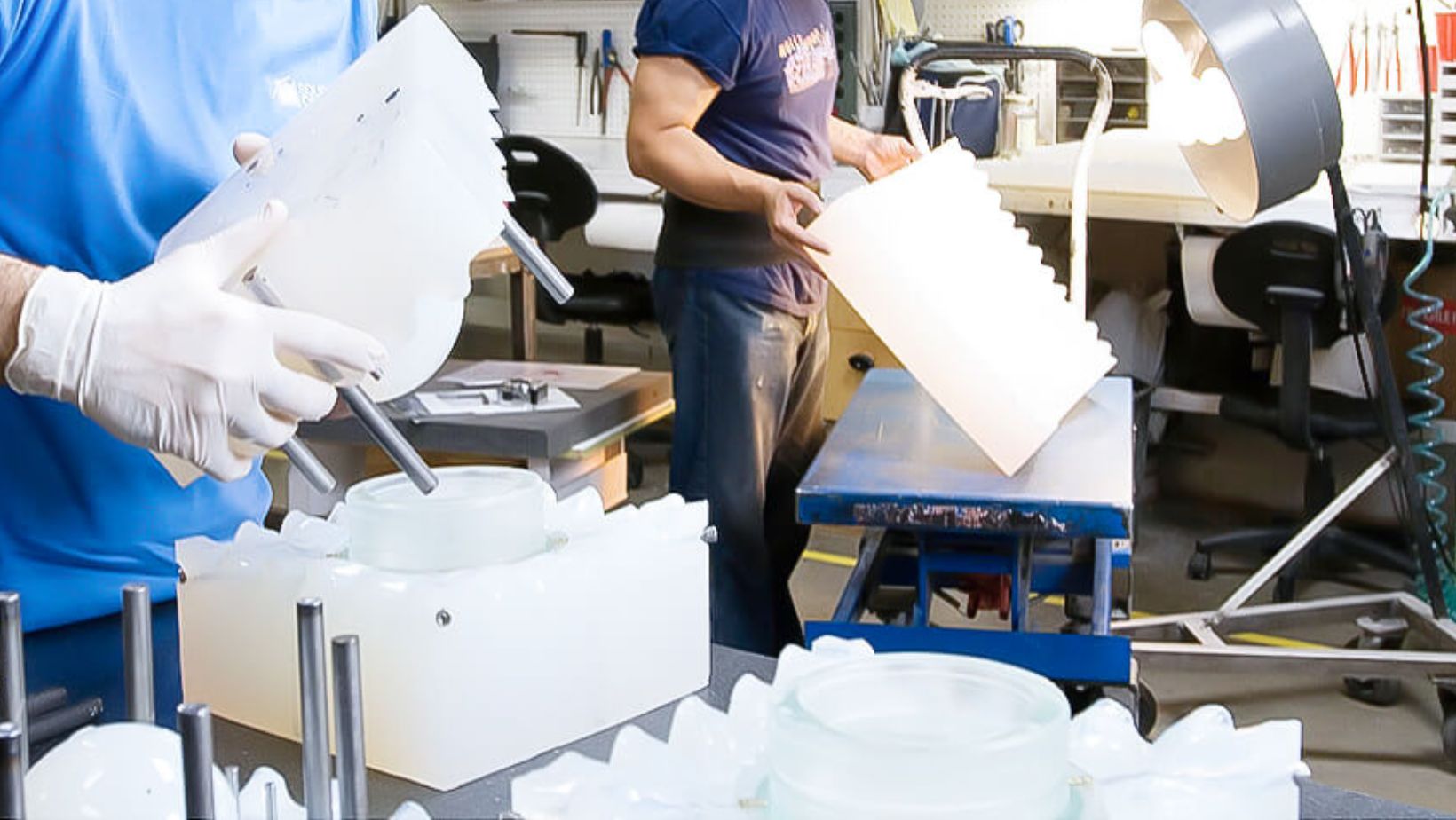Vacuum casting also goes by other names, like polyurethane or urethane casting. This casting method produces plastic or rubber products using silicon molds. Vacuum casting is popular because it is quicker than plastic injection molding and helps attain almost the same results.
Since the vacuum creates the product, the surface of the final product is blemishless and bubble free. Due to their preciseness, vacuum casting parts are helpful when making rapid prototypes for plastic injection molding.
Higher Precision
The significant advantage of silicon molds used in vacuum casting is that they allow intensive product precision. In comparison, other material molds compromise the details to some extent.
Maintains Quality
Vacuum casting uses a vacuum-based technique to manufacture products. Hence there are no bubble patterns or unevenness on the final surface of the product.
Since there are no worries about air hindrances, you can easily create products of all designs and details. Furthermore, you can also change the rigidity of the products by changing the materials used for production.
Affordable
Injection molding is a great manufacturing process. However, it proves significantly expensive for some projects. Moreover, if you use it for rapid prototyping, it may require an extended upfront. Here, vacuum casting works perfectly. The process is comparatively inexpensive and mimics the quality of injection molding.
It is suitable for fitting and functional testing before the final production. You can create a prototype of the full-scale product for verification and design amendments with reduced costs.
Suitable For Thin Wall Casting
Sometimes the requirements are to use less material with increased details. Such productions are thin wall castings. Usually, products with functioning shells or complex internal structures require thin wall casting. While other methods exist to attain that, they need more expertise and expense.
However, vacuum casting is much easier. It ensures the required thinness while demanding fewer skills and knowledge on the operator’s part.
Consistency
Structural consistency is the ultimate challenge a part manufacturing company faces. Fortunately, vacuum casting is ideal for creating consistent pieces. Most users demand less production time and maximum consistency, which are the distinguishing characteristics of vacuum casting.
Applications Of Vacuum Casting
Injection molding is a mass-production process. It can produce thousands of parts in a single batch. In comparison, vacuum casting delivers low-volume productions. Therefore, understanding its applicability is a little tricky.
- Vacuum casting works suitably for manufacturing commercial products like writing pens, food packaging, sunglasses, etc. Since vacuum casting is a relatively accessible and economical process, it also makes a good choice for startups.
- Another common application of vacuum casting is for household products. Nearly all your daily useables, like cosmetics, water bottles, lighting lamps, etc., are vacuum cast.
- Food and beverage industries also use vacuum casting. Tin cans, aluminum foils, and other food packages are familiar illustrations of vacuum casting.
Final Verdict
Vacuum casting is a popular manufacturing process. It is reputable for its highly detailed and economic results. However, you need to take care of certain things to ensure the accuracy of the end product.
The selection of material, the molding process, and other procedures are necessary to get the required results. Vacuum casting offers an unmatched part consistency; therefore, it is common in industries like food packaging, household consumables, etc.

